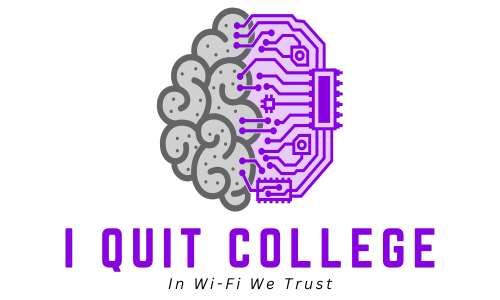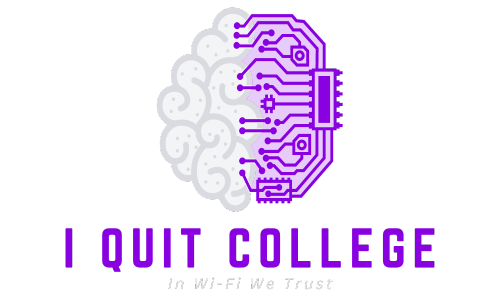Building a strong relationship with clients is crucial for success in business. Clear and consistent communication is key to establishing trust and maintaining strong client relationships. Effective client management is essential for small businesses. By being open and honest, sharing knowledge, and exceeding expectations, you can create positive and lasting relationships with clients.
Key Takeaways:
- Clear and consistent communication is essential for building strong relationships with clients and partners.
- Being open, honest, and transparent helps establish trust and rapport with clients.
- Sharing knowledge and expertise builds confidence and strengthens the client relationship.
- Being open-minded and respectful of different perspectives fosters healthy communication and collaboration.
- Exceeding expectations and delivering exceptional results creates a positive impression and fosters long-term client relationships.
Communicate Effectively and Consistently
Timely and efficient communication is the foundation for building strong client relationships. To establish effective communication, it is essential to consistently engage with your clients. By doing so, you can demonstrate your commitment to understanding and valuing their business goals and progress.
Maintaining consistent communication also helps create an environment where clients feel comfortable being open and honest with you. Encourage them to express their ideas, concerns, and feedback, and make sure to address them seriously and promptly. This open and responsive approach fosters trust and strengthens the client relationship.
Here are some communication techniques to help you communicate effectively and consistently:
- Active Listening: Pay close attention to your clients’ needs and concerns, and provide appropriate responses and solutions.
- Clear and Concise Messages: Avoid confusion by delivering information in a straightforward and concise manner.
- Regular Updates: Keep your clients informed about project progress, milestones, and any relevant updates, reinforcing transparency and trust.
- Responsive Communication: Be prompt and thorough in replying to client emails, calls, and messages, demonstrating your commitment to their satisfaction.
- Use of Various Communication Channels: Adapt your communication style to match your clients’ preferences, whether it be email, phone calls, video conferencing, or in-person meetings.
Remember, effective communication is a two-way street. Always listen attentively, ask clarifying questions, and tailor your communication to meet your clients’ needs. By focusing on effective and consistent communication, you can create stronger client relationships and increase client satisfaction.

| Communication Techniques | Benefits |
|---|---|
| Active Listening | – Better understanding of client needs – Improved problem-solving – Enhanced empathy and rapport |
| Clear and Concise Messages | – Minimize misunderstandings – Increase clarity and efficiency – Promote effective decision-making |
| Regular Updates | – Promote transparency – Foster trust and confidence – Manage client expectations effectively |
| Responsive Communication | – Demonstrate commitment to client satisfaction – Improve overall client experience – Strengthen professional relationships |
| Use of Various Communication Channels | – Accommodate client preferences – Enhance accessibility and convenience – Facilitate effective collaboration |
Be Positive
Show a positive attitude towards your clients. Exude enthusiasm and confidence in your work and be someone that clients enjoy working with. Your positive energy can make a significant impact on client relationships.
Interpersonal communication plays a vital role in building and maintaining strong client relationships. When you approach your client interactions with positivity, it creates a welcoming and collaborative environment. Here are some communication strategies to help you foster positivity in your client relationships:
1. Maintain a friendly and approachable demeanor
When communicating with clients, cultivate a friendly and approachable demeanor. Use friendly greetings, smile, and maintain open body language to put your clients at ease. This helps create a positive atmosphere where clients feel comfortable expressing their thoughts, concerns, and ideas.
2. Use positive language
Employ positive language and tone in your verbal and written communication with clients. Choose words that convey optimism and confidence, and frame your messages in a way that highlights opportunities and solutions. Avoid negative language that may come across as dismissive or discouraging.
3. Celebrate successes and milestones
Take the time to celebrate successes and milestones with your clients. Acknowledge their achievements, milestones, or project milestones and express your genuine enthusiasm and appreciation for their efforts. This not only shows your clients that you value their accomplishments but also reinforces a positive working relationship.
| Benefits of Being Positive in Client Communication |
|---|
| Improved collaboration and teamwork |
| Enhanced client satisfaction and loyalty |
| Enhanced problem-solving and conflict resolution |
| Increased client engagement and participation |
| Strengthened long-term client relationships |
“Positivity breeds productivity and creativity.”
– Richard Branson
By fostering a positive atmosphere, you create an environment that encourages effective communication and enhances the overall client experience. Remember to remain genuine and authentic in your positivity, as clients can quickly detect insincerity. Embrace the power of positivity to build stronger and more fruitful client relationships.
Share Your Knowledge
When it comes to building strong client relationships, sharing your expertise is key. By helping your clients understand your area of expertise and the decision-making process behind your work, you can build trust and confidence in your abilities. Effective communication is essential in conveying your knowledge to clients, whether it’s through verbal explanations, presentations, or written materials.
One effective technique to share your knowledge is through informative and engaging presentations. Use visual aids, such as graphs or charts, to simplify complex concepts and make them more accessible to your clients. By presenting your information in a clear and structured manner, you can enhance their understanding and strengthen their trust in your expertise.
Another effective communication technique to share your knowledge is through detailed reports or case studies. Provide your clients with comprehensive insights into your work process, highlighting key milestones, data analysis, and outcomes. By showcasing your expertise through tangible evidence, you can establish yourself as a reliable partner and reinforce the client relationship.
In addition to formal presentations and reports, remember to foster open dialogue with your clients. Encourage questions and actively listen to their concerns. This not only demonstrates your commitment to effective interpersonal communication but also allows you to address any potential misunderstandings or doubts. Verbal communication is essential in fostering trust and ensuring that your clients feel heard and understood.
“The more you share knowledge, the more you empower others.”
Case Study: Effective Knowledge Sharing in Action
| Client | Industry | Challenge | Approach | Outcome |
|---|---|---|---|---|
| Sunny Skies Travel Agency | Tourism | Lack of understanding regarding digital marketing strategies | Conducted a workshop on digital marketing, sharing best practices and industry insights | Client gained a clear understanding of digital marketing strategies and saw a 20% increase in website traffic within three months |
| Fashion Forward Boutique | Retail | Inconsistent visual merchandising leading to decreased sales | Provided visual merchandising training to the store staff and shared research-backed techniques | Boutique experienced a 15% increase in sales and improved customer engagement through visually appealing product displays |
In the case study above, both Sunny Skies Travel Agency and Fashion Forward Boutique effectively shared their knowledge with their clients. By providing valuable insights and practical guidance, they addressed their clients’ challenges and achieved positive outcomes. Through open and effective communication, they not only built stronger client relationships but also contributed to their clients’ success.
Remember, effective knowledge sharing is not just about imparting information—it’s about empowering your clients and fostering a collaborative partnership. By continuously enhancing your communication skills and implementing effective communication techniques, you can create lasting client relationships built on trust, expertise, and mutual growth.

Be Open-Minded
Effective communication goes beyond simply conveying information; it involves being receptive to different perspectives and ideas. By maintaining an open mind, you can foster stronger connections with your clients and demonstrate your commitment to understanding their needs. Here are some techniques to practice open-mindedness in client communication:
- Listen actively: Pay close attention to your clients’ concerns, opinions, and suggestions. Engage in active listening by providing verbal and nonverbal cues that show you are fully present and attentive.
- Seek clarification: If there are any points that you find ambiguous or unclear in your client’s communication, don’t hesitate to ask for clarification. This helps avoid misunderstandings and ensures effective communication.
- Embrace diverse perspectives: Recognize that each client brings their unique background and experiences. Respect and value their viewpoints, even if they differ from your own. Embracing diverse perspectives encourages creative solutions and enriches the client relationship.
- Encourage feedback: Create an environment where clients feel comfortable sharing their opinions and suggestions openly. Actively seek their feedback on your work and be open to constructive criticism.
“Being open-minded is not only about listening; it’s about genuinely considering and respecting different perspectives. It allows for innovative solutions and fosters stronger relationships with clients.”
— Sarah Johnson, Marketing Consultant
Implementing these practices of open-mindedness in your communication with clients establishes trust, promotes effective collaboration, and strengthens the client relationship. By embracing diverse perspectives, you can position yourself as an expert in your field while earning the respect and loyalty of your clients.
Benefits of Being Open-Minded in Client Communication
| Benefits | Explanation |
|---|---|
| Enhanced problem-solving | Open-mindedness promotes brainstorming and consideration of multiple perspectives, leading to more innovative and effective solutions. |
| Increased client satisfaction | By valuing and respecting diverse ideas, you create a positive client experience that fosters trust and satisfaction. |
| Improved collaboration | Open-mindedness encourages collaboration and active engagement, leading to stronger relationships and better outcomes. |
| Expanded professional growth | Engaging with different perspectives allows for continuous learning and personal development within your industry. |
Exceed Expectations
One of the most powerful strategies for building and maintaining strong client relationships is to consistently exceed expectations. By setting reasonable expectations and then going above and beyond to deliver exceptional results, you can position yourself as someone that clients want to continue working with.
Effective communication plays a crucial role in this process. By keeping an open line of communication with your clients, you can ensure that you fully understand their needs and objectives. Regularly check in with them to provide progress updates and address any concerns or questions they may have. This proactive approach shows that you value their business and are dedicated to their success.
In addition to effective communication, it’s important to consistently deliver outstanding work. Pay attention to the details and strive for excellence in every aspect of your service or product. By consistently surpassing expectations, you not only create a positive impression, but you also establish a reputation for excellence and reliability.
Ultimately, by exceeding expectations, you create a positive and lasting impression on your clients. This not only strengthens your current client relationships but also helps you attract new clients through referrals and positive word-of-mouth. By consistently going the extra mile, you can foster long-term client relationships and position yourself as a trusted partner in their business success.






